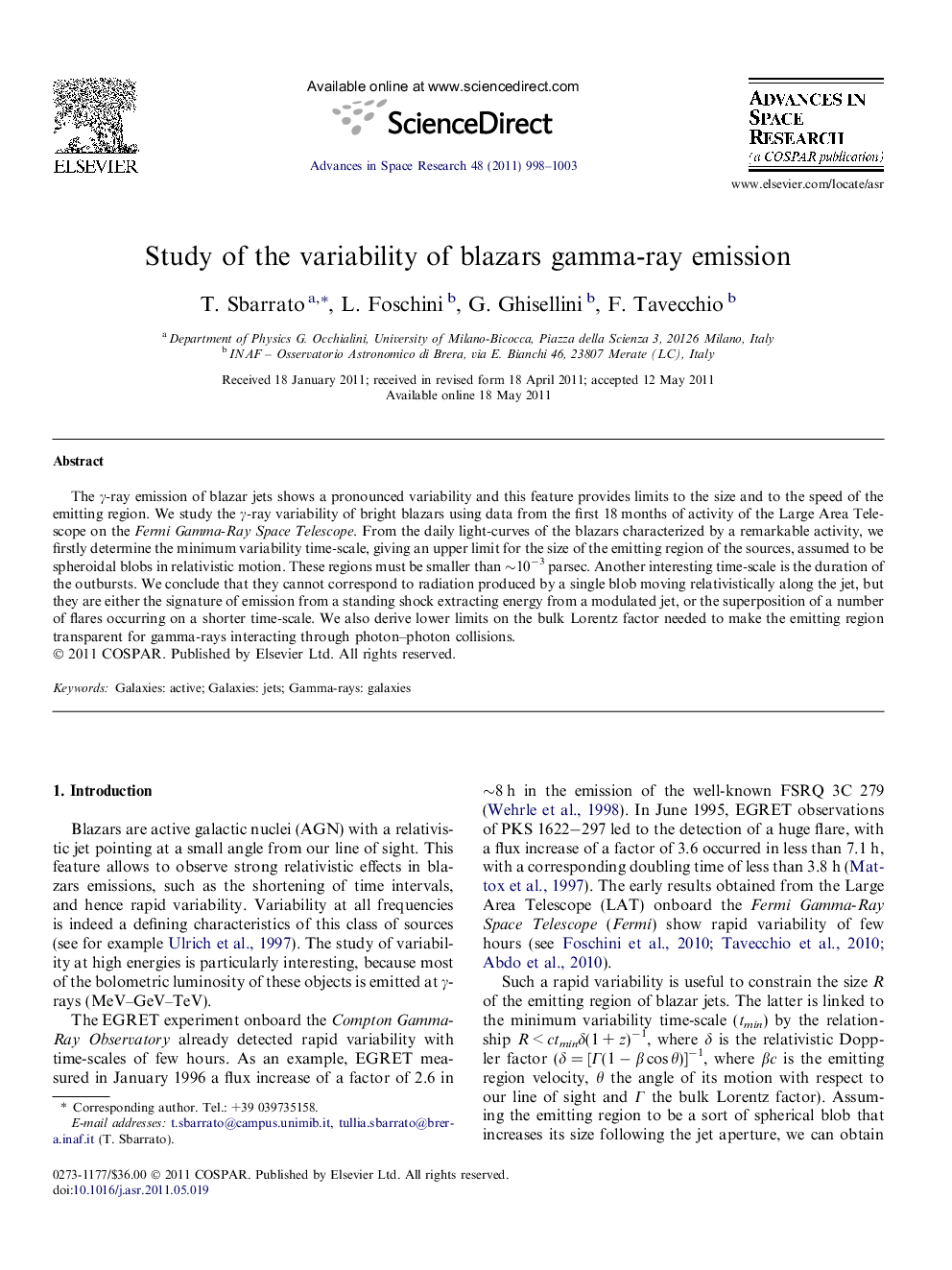| Article ID | Journal | Published Year | Pages | File Type |
|---|---|---|---|---|
| 1765120 | Advances in Space Research | 2011 | 6 Pages |
Abstract
The γ-ray emission of blazar jets shows a pronounced variability and this feature provides limits to the size and to the speed of the emitting region. We study the γ-ray variability of bright blazars using data from the first 18 months of activity of the Large Area Telescope on the Fermi Gamma-Ray Space Telescope. From the daily light-curves of the blazars characterized by a remarkable activity, we firstly determine the minimum variability time-scale, giving an upper limit for the size of the emitting region of the sources, assumed to be spheroidal blobs in relativistic motion. These regions must be smaller than â¼10â3 parsec. Another interesting time-scale is the duration of the outbursts. We conclude that they cannot correspond to radiation produced by a single blob moving relativistically along the jet, but they are either the signature of emission from a standing shock extracting energy from a modulated jet, or the superposition of a number of flares occurring on a shorter time-scale. We also derive lower limits on the bulk Lorentz factor needed to make the emitting region transparent for gamma-rays interacting through photon-photon collisions.
Keywords
Related Topics
Physical Sciences and Engineering
Earth and Planetary Sciences
Space and Planetary Science
Authors
T. Sbarrato, L. Foschini, G. Ghisellini, F. Tavecchio,
